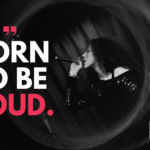Now Reading: How to Create a Killer Setlist That Keeps Your Audience Hooked
-
01
How to Create a Killer Setlist That Keeps Your Audience Hooked
How to Create a Killer Setlist That Keeps Your Audience Hooked

Article by Manuela Bittencourt – 08/12/2025
Whether you’re playing a 20-minute open mic slot or a full hour headlining a show, crafting the right setlist is one of the most important steps toward delivering an unforgettable performance. A well-thought-out setlist controls the energy flow, keeps your audience engaged, and showcases your strengths as an artist.
But building a great setlist is more than just choosing your favorite songs. It’s about storytelling, pacing, and connecting emotionally with your listeners. Here’s a step-by-step guide to help you create a killer setlist every time.
Crafting the Perfect Setlist: From First Song to Final Bow
- Know Your Time Limit
The first step is to know exactly how much time you have to perform. This could be anything from 10 minutes at an open mic to 90 minutes at a headline show. Once you know your slot, you can play how many songs to include.
A general rule is to allow about 4-5 minutes per song, including any talking or transitions. Factor in breaks if needed, especially for longer sets.
- Pick Your Strongest Songs
Start by listing your best material – songs that showcase your talent and connect well with audiences. If you’re new, these might be your most practiced songs or crowd-pleasers.
Don’t just pick personal favorites; consider which songs will resonate most with your audience. If you’ve played live before, think about which songs got the best reactions.
- Plan the Opening Song Carefully
Your opener sets the tone for the entire show. Choose an energetic, attention-grabbing song that immediately pulls the audience in. It should be familiar enough for you to play confidently but powerful enough to create excitement.
Avoid starting with slow or complex songs that might lose the crowd’s interest early on.
- Build a Dynamic Flow
Vary the mood, tempo, and intensity of songs throughout your set. Mix fast songs with slower, more emotional ones to create contrast and keep listeners engaged.
For example, after an upbeat, high-energy track, follow with a ballad or acoustic number to give the audience a breather. Then ramp up again with something more driving.
- Group Songs for Smooth Transitions
Arrange your setlist so that songs flow naturally from one to the next. Think about key signatures, tempos, and lyrical themes to avoid awkward breaks.
You can create mini “sections” within your set where the songs complement each other, making it easier to transition and keeping the energy consistent.
- Plan Moments for Talking or Interaction
Between songs, you’ll want to speak to the audience – whether to introduce a song, tell a story, or engage them with a question. Make space for these moments in your setlist.
Avoid talking too much, but well-placed comments can add personality and deepen the connection with your audience.
- End Strong with a Memorable Closer
Your final song should leave a lasting impression. It’s often your biggest hit, your most energetic number, or a fan favorite.
A strong closer sends the audience home happy and eager for more. Consider saving your most powerful or emotional song for last.
- Have Backup Songs Ready
Sometimes you’ll need to shorten or extend your set due to venue constraints or audience response. Having a couple of extra songs prepared gives you flexibility.
Be ready to adjust on the fly – adding a cover or an acoustic number can keep the flow going smoothly.
- Rehearse Your Setlist as a Whole
Practice your entire set in the order you’ll perform it. This helps you get comfortable with transitions and pacing, so the show feels natural.
Rehearsing also reveals any weak spots or awkward parts, allowing you to tweak the order or swap out songs.
- Get Feedback and Refine
If possible, play your setlist for friends or mentors and ask for honest feedback. Sometimes fresh ears can spot pacing issues or songs that don’t fit well.
Be open to adjusting your setlist based on audience reactions from previous shows too. Over time, you’ll learn what works best for your style and crowd.
Final Thoughts
Creating a setlist is an art in itself – it’s your roadmap for the live experience you want to create. Thoughtful pacing, emotional variety, and strategic song choices keep your audience captivated from the first chord to the final note.
With practice and attention to detail, your setlist will become a powerful tool to showcase your music and make every performance memorable.























